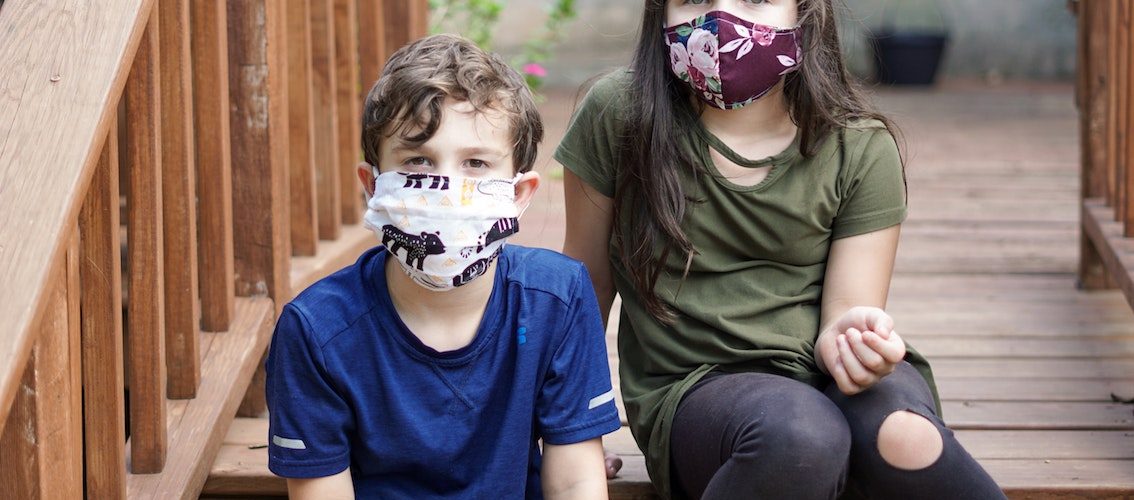What’s one word that describes school reopening during COVID-19? Stressful.
In the United States, 66 percent of parents are concerned about their kids returning to school — and that’s just the parents. Students, teachers, and staff have their own worries. For administrators and principals, this is a big obstacle — but not an insurmountable one.
That’s because schools are conducting school reopening surveys to find out how the community feels as the new year begins. But it’s not just about the mood.
As schools switch to hybrid learning, there are many practical and logistical aspects that schools need to address, such as ensuring students’ access to educational technology (EdTech), creating schedules that combine virtual and in-person classes, providing school lunches and transport, and managing the health and safety concerns and regulations related to COVID-19.
Pro Tip
Take the stress out of reopening with JotForm. Create your survey with Jotform’s easy-to-use builder and get the feedback you need fast.
With the help of school reopening surveys, administrators can accurately gauge the situation on the ground and plan according to the needs of their school.
There are several advantages to using a digital school reopening survey template. First, you can adapt and edit surveys to include the most appropriate questions with just a few clicks. Second, you can easily create separate surveys for different groups, such as teachers, parents, and students — schools can use parent surveys to improve parental involvement, for instance. Another advantage of digital survey forms is the ability to send and receive them online, in a completely contactless way, with all the response data consolidated and accessible in one place.
What to ask on school reopening surveys
To be effective, school reopening surveys must ask the right questions. A good way to ensure this is by dividing the survey into sections covering the most important and relevant areas, such as home setup, parent availability, transport, school lunches, health situation, and more. This approach makes it easier for respondents to provide clear, thoughtful answers. It also makes it easier to compile and assess the results when the survey is complete.
Here are the best ideas by category for school reopening survey questions to get the feedback you need.
Health
- Is the student at high medical risk?
- Does the student live with people who are at high medical risk?
- Does the student come into regular contact with someone who is at high risk of exposure to the coronavirus?
- Is the parent able and willing to check the child’s temperature every morning before school and complete a self-declaration of health form on behalf of the child?
- Does the student have any emotional/social difficulties during this period that may make school attendance difficult?
- Does the student need/want counseling or guidance?
Learning preferences
- Does the parent have a preference for a specific combination of virtual and in-class learning (i.e., three days at home, two days on campus)?
- If the school enforces strict social distancing protocols, would the parent consider sending the child to school full time?
- Does the parent agree to send the child to school in pods (small groups of students who only come into contact with each other)?
- Does the parent believe the child is capable of maintaining social distance while on campus?
- Is the child willing and able to wear PPE, such as a mask and gloves, if required by government regulations or school guidelines?
Technology/home setup
- Does the child have access to a fast internet connection?
- Does the child have access to a laptop or other computer?
- Is there a space in the home where the child can safely and quietly attend virtual classes and participate in hybrid learning?
- If more than one child lives in the home, are there enough computers for all?
- Does the family require assistance in obtaining or maintaining equipment in order for their child to learn at home?
Child care/parent availability
- Is there a parent or guardian at home during school hours to support the student and ensure they are participating in virtual learning?
- Does the parent or guardian work outside the home and require child care during virtual learning times?
- Does the parent or guardian require any extra assistance in order to support their child in virtual learning?
Transport
- Does the child have transportation to school for on-campus days?
- Does the child need school bus transportation?
- Is the parent comfortable sending the child to school on a bus?
- Can the parent help educate the child to socially distance and wear a mask (if required by law) when on the school bus?
- How many times a week does the child need school bus transportation (morning and afternoon)?
Cafeteria
- If COVID-19 safety measures are in place, does the parent give permission for their child to eat a provided lunch in the cafeteria?
- Does the parent prefer to send a packed lunch from home?
- According to COVID-19 regulations, the school must shut off drinking fountains. Does the parent agree to send the child to campus with bottled water?
School communications
- Is the parent willing to communicate with teachers and school staff online, and is the parent capable of maintaining online communication?
- How many times a week would the parent like to receive school updates?
- Does the parent agree to contact the teacher via digital request form if any issues arise with their child (learning, emotional, or other)?
Rated questions
The survey can include questions with a rated response. Here are a couple of examples:
- How concerned are you about sending your child to school?
- Very concerned
- Somewhat concerned
- Mildly concerned
- Not concerned
- How satisfied were you with the quality of virtual classes during the spring shutdown?
- Dissatisfied
- Neutral
- Somewhat Satisfied
- Very Satisfied
These answers are easy to collate into actionable data, and they provide a valuable gauge of the general mood on various issues.
Free-text answers
Free-text questions provide an opportunity for parents to openly express concerns or issues that survey questions may not have addressed. An example of a free-text prompt is “Please provide any other information that could help us deliver the best educational experience for your child.”
Free-text responses are important, as there may be personal circumstances for a particular student that are important to know or aspects of hybrid learning that school staff hadn’t thought of. These can stimulate out-of-the-box thinking and solutions.
Take the temperature for school reopening
Knowing how parents are feeling about school reopening is helpful. However, it’s much more beneficial if you can find out exactly what they’re concerned about — lack of social distancing on the school bus, for example — or which aspect of hybrid learning they are struggling with — such as a child with ADD who can’t keep up. With the help of focused, thoughtful survey questions, schools can find out what they need to do to make reopening a success.










Send Comment: